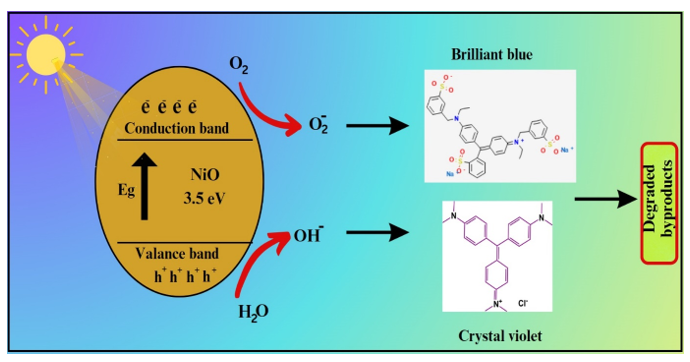
According to estimates, around 15-50% of textile dyes fail to adhere to the fabric during the dyeing process, resulting in their discharge into wastewater. This wastewater is often used for agricultural irrigation in impoverished nations which harms plant germination and development. In this study, polymer composites of Polypyrrole (PPy) and nickel oxide (NiO) nanocomposites were synthesized via the hydrothermal method with different concentrations (250 mg, 500 mg, and 75 0mg) and their composite samples were employed as catalysts to degrade the anionic-brilliant blue and the cationic-crystal violet dye under 120 mins of sunlight irradiation. The process of degrading BB and CV dyes utilising nano catalysis was analysed using a pseudo-first-order kinetics model. The findings indicate that the degradation of the anionic dye is more efficient than that of the cationic dye under exposure to sunlight. Hence, the presence of NiO NPs and the NiO-PPy nanocomposite significantly impact their photocatalytic activity in degrading BB and CV dyes, achieving an impressive efficiency of around 96.99% and 89.96% respectively. Moreover, its stability has also been studied for over five cycles.
Total file downloads: 31